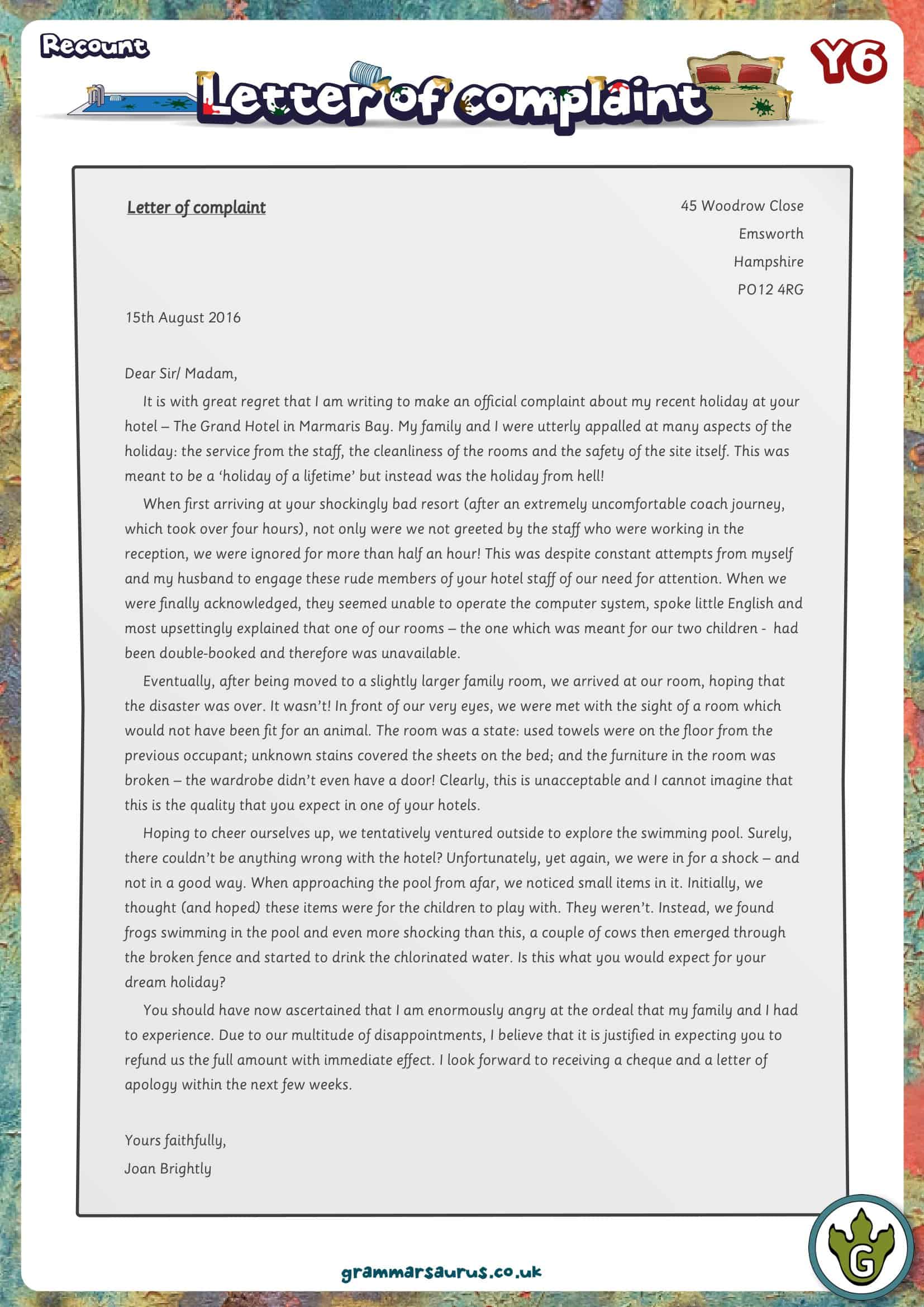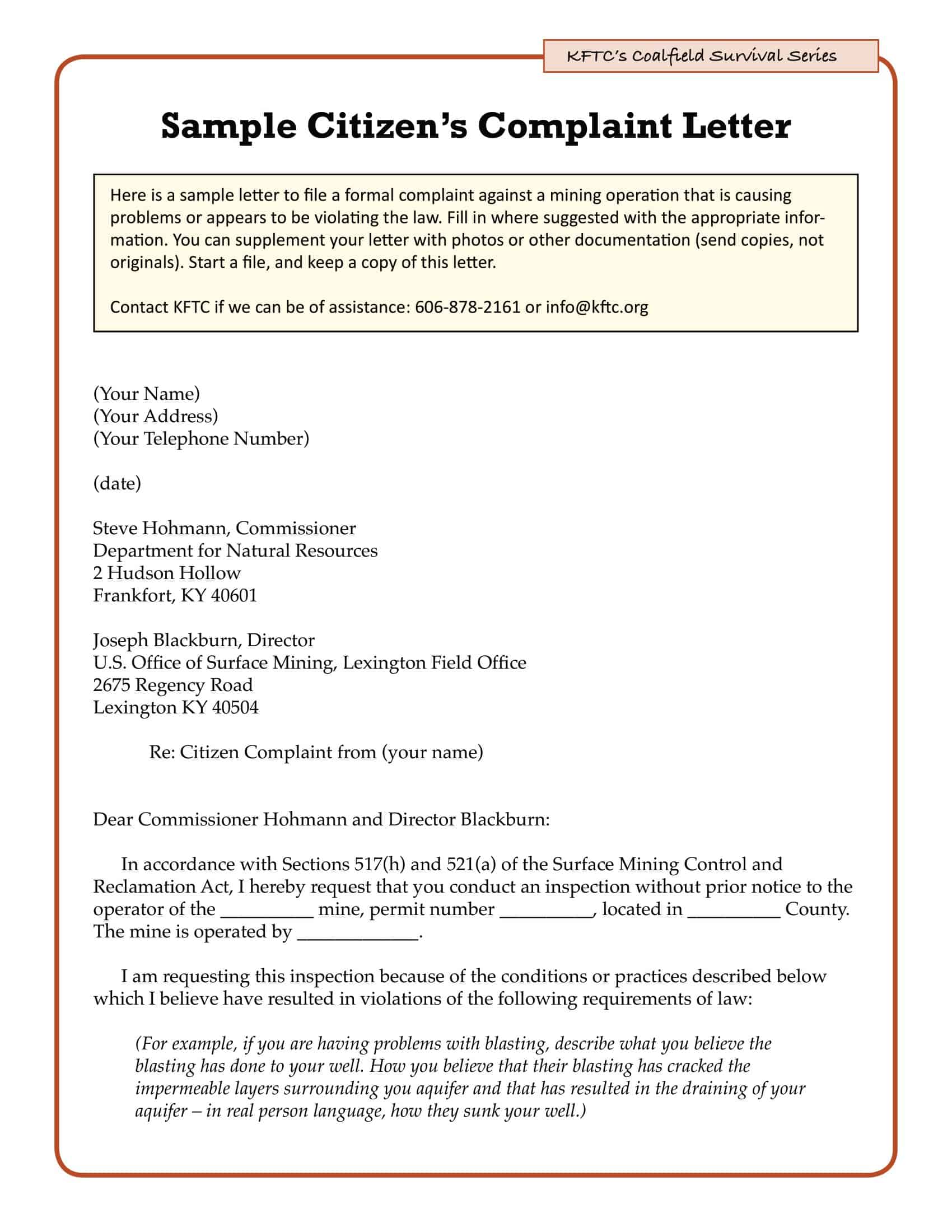Expressing grievances in the workplace is a normal and necessary step towards finding a resolution. By formally submitting a complaint letter, you can ensure that your concerns are heard and addressed by the appropriate manager or human resources representative. Writing a complaint letter can seem daunting, but it is important to remember to approach the letter with both tact and directness in order to effectively convey your intent.
Table of Contents
What is a complaint letter?

A complaint letter is a formal document that outlines a problem or issue that a person has encountered and requests that the recipient take action to rectify the situation. It is often used in a business or professional context to address issues such as poor service, defective products, or other types of dissatisfaction.
The letter typically includes details about the problem, the actions taken to address it, and the desired outcome. The main purpose of a complaint letter is to resolve an issue or to seek compensation or some other form of redress.
Complaint Letter Templates
Complaint Letter Templates are pre-designed formats used to communicate grievances, dissatisfaction, or concerns to individuals, organizations, or institutions in a structured and formal manner. These templates provide a clear and consistent framework for expressing complaints, outlining the issue at hand, and seeking a resolution. Complaint Letter Templates ensure that complaints are articulated effectively, maintain professionalism, and facilitate a prompt and appropriate response.
Complaint Letter Templates provide a structured and effective approach to expressing grievances and seeking resolution. By using these templates, individuals can ensure that their complaints are articulated clearly, professionally, and consistently. These templates facilitate the timely and appropriate handling of complaints, enabling organizations to address issues promptly, rectify errors, and maintain customer satisfaction. Whether for personal or business matters, Complaint Letter Templates help streamline the complaint process and promote effective communication for resolving conflicts and achieving satisfactory outcomes.
Types of complaint letters
There are several types of complaint letters, including:
Consumer complaint letter: This type of letter is written by a customer who is dissatisfied with a product or service they have received. The letter is typically sent to the company or organization responsible for the product or service.
Business complaint letter: This type of letter is written by a business owner or representative who is dissatisfied with the actions or behavior of another business.
Employee complaint letter: This type of letter is written by an employee who is dissatisfied with the actions or behavior of their employer or a co-worker.
Government complaint letter: This type of letter is written to a government agency or department to address a problem or issue related to public services or policies.
Discrimination complaint letter: This type of letter is written by an individual who believes they have been treated unfairly on the basis of their race, gender, age, or other protected characteristic.
Harassment complaint letter: This type of letter is written by an individual who has been the victim of harassment or bullying in the workplace.
Safety complaint letter: This type of letter is written by an employee or member of the public to report unsafe working conditions or equipment.
Professional complaint letter: This type of letter is written by a client or customer who is dissatisfied with the work of a professional, such as a lawyer, doctor, or contractor.
Key elements of complaint letters
The essential elements of a complaint letter include:
The date: This is important for keeping track of when the letter was written and when the problem occurred.
The recipient’s address: This includes the full name, title, and mailing address of the person or organization to whom the letter is addressed.
A clear and concise subject line: This should briefly summarize the main issue or problem that the letter is addressing.
A polite and professional tone: The letter should be written in a calm and respectful manner, avoiding the use of harsh or accusatory language.
A detailed description of the problem: This should include specific details such as dates, times, and names of individuals involved.
A request for action: This should clearly state what the writer would like the recipient to do to resolve the issue.
A deadline for a response: This should be a reasonable and specific date by which the writer expects to receive a response.
The writer’s contact information: This should include the writer’s full name, mailing address, phone number, and email address.
A closing: A polite closing such as “Sincerely,” or “Thank you for your time”
Signature: This is the writer’s signature and it should be written legibly.
How to Write a Complaint Letter
Writing a complaint letter is an important step in addressing a problem or issue that you have encountered. It allows you to formally express your concerns and request action from the person or organization responsible for the problem. Here are some step-by-step guidelines for writing a complaint letter:
Step 1: Gather all the necessary information
Before you start writing the letter, it is important to gather all the necessary information related to the problem. This includes the date of the incident, the names of any individuals involved, and any relevant documentation such as receipts or contracts.
Step 2: Start with a clear and concise subject line
The subject line should summarize the main issue or problem that the letter is addressing. It should be clear and concise, so the recipient knows what the letter is about.
Step 3: Address the letter to the appropriate person or organization
Make sure to address the letter to the correct person or organization responsible for the problem. The letter should be addressed to the person in charge of the department, such as the manager or customer service representative.
Step 4: Open with a polite and professional tone
The opening of the letter should be polite and professional, avoiding the use of harsh or accusatory language. Start by introducing yourself and the purpose of the letter.
Step 5: Provide a detailed description of the problem
Include specific details such as dates, times, and names of individuals involved in the problem. Describe the incident or issue as clearly and concisely as possible.
Step 6: Request action
Clearly state what you would like the recipient to do to resolve the issue. Be specific about what you want them to do, such as providing a refund, fixing a problem, or offering an apology.
Step 7: Provide a deadline for a response
Include a specific date by which you expect to receive a response from the recipient. This gives them a clear deadline for when they need to take action.
Step 8: Include your contact information
Make sure to include your full name, mailing address, phone number, and email address so the recipient can contact you.
Step 9: Close the letter politely
End the letter with a polite closing such as “Sincerely,” or “Thank you for your time.”
Step 10: Sign the letter
Sign the letter legibly, and if possible, typed your name below the signature
Step 11: Keep a copy of the letter
Make a copy of the letter for your own records, in case you need to refer to it later.
FAQs
Who should I address my complaint letter to?
You should address your complaint letter to the person or organization responsible for the problem. This could be a manager, customer service representative, or other relevant department within the company. If you’re unsure who to address it to, you can try calling the company and asking for the appropriate contact.
How should I format my complaint letter?
A complaint letter should typically include a clear and concise subject line, the recipient’s address, a professional and polite tone, a detailed description of the problem, a request for action, a deadline for a response, your contact information, a closing, and your signature.
How long should a complaint letter be?
A complaint letter should be concise and to the point. It should be long enough to provide all the necessary information and details about the problem, but not so long that it becomes tedious to read. Typically, one page is sufficient.
Should I include documentation with my complaint letter?
Yes, if you have any relevant documentation such as receipts, contracts, or other proof of the problem, it’s a good idea to include it with your complaint letter. This can help to support your claims and make your case stronger.
How long should I wait for a response before following up?
The time frame for a response will depend on the company or organization you are complaining to. In most cases, you should expect to receive a response within a few weeks. If you haven’t received a response by then, it’s appropriate to follow up with a phone call or email to inquire about the status of your complaint.
What should I do if I am not satisfied with the response to my complaint letter?
If you are not satisfied with the response to your complaint letter, you can try escalating the issue to a higher level within the company or organization. You can also consider taking legal action or seeking help from a consumer protection agency.
Is it necessary to use specific language or tone in a complaint letter?
Yes, it’s important to use a polite and professional tone in a complaint letter. Avoid using harsh or accusatory language, and instead, focus on clearly and concisely describing the problem and your request for action.















































































![Free Printable Friendly Letter Templates [PDF, Word, Excel] 1st, 2nd, 4th Grade 1 Friendly Letter](https://www.typecalendar.com/wp-content/uploads/2023/05/Friendly-Letter-150x150.jpg 150w, https://www.typecalendar.com/wp-content/uploads/2023/05/Friendly-Letter-1200x1200.jpg 1200w)
![43+ Printable Leave of Absence Letter (LOA) Templates [PDF, Word] / Free 2 Leave of Absence Letter](https://www.typecalendar.com/wp-content/uploads/2023/01/Leave-of-Absence-Letter-150x150.jpg 150w, https://www.typecalendar.com/wp-content/uploads/2023/01/Leave-of-Absence-Letter-1200x1200.jpg 1200w)
![Free Printable Roommate Agreement Templates [Word, PDF] 3 Roommate Agreement](https://www.typecalendar.com/wp-content/uploads/2023/06/Roommate-Agreement-150x150.jpg)
